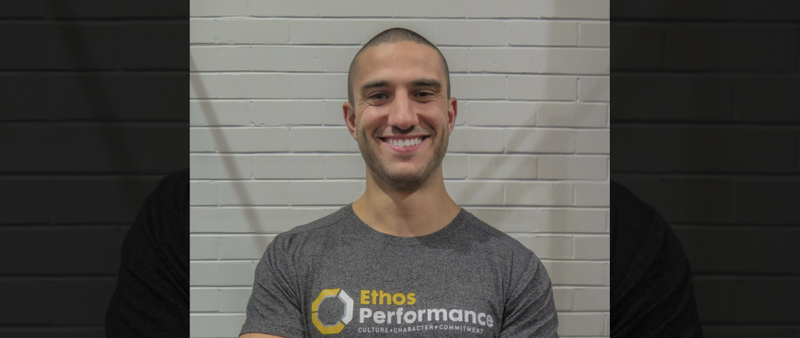
“Breaking down of macrocycles is essential for intricate load management. Months, weeks and days are planned and monitored closely to ensure undulating loads of high & low. This aids in maximising the benefits of other sessions during the week, whilst mitigating threat of excessive over-training that has become notorious in the combat community.”
Combat athletes are without a doubt the hardest workers on the planet. Think of a sport with higher consequences than that of a marital artist to help you realise why this might be true. So what’s the point of a ‘strength and conditioning (S&C) coach if these warriors willingly drag themselves into the deepest waters, pushing harder and further than 99% of the population.
A S&C coach will establish quality movement foundations and develop physical capacity to help their client realise their true athletic potential. This is designed to complement an athlete’s skills-based training, as athletes come to the gym to get better on the mats, they don’t go on the mats to get better at the gym.
A quality S&C coach must cast all ego aside and recognise they may only have a marginal impact on their athlete’s success. However, the razor thin margins of professional fighting mean those small impacts could be the difference between winning and losing a contentious split decision.
Knowing your Athlete
Years of study, participation and knowledge of the sport allows an experienced coach to cover two facets of profiling – addressing the demands of your athlete, and fine-tuning through quantitative assessment.
By addressing the physiological, biomechanical & anatomical demands required of their athlete, an S&C coach can devise a contingent plan customized specifically for the individual. It’s simple, the deeper the understanding, the greater chance of success.
Secondly, regular quantitative assessment ensures a tailored program which accommodates any level of ‘lifter’. For beginners it’s important to keep things simple and avoid “reinventing the wheel.” Relentlessly attacking the basics will give these athletes optimal adaptions.
For advanced athletes, coaches need to squeeze the fruit a little harder to get the juice. An in-depth understanding of coaching methods coupled with a ‘consistency is key’ approach is the strongest way to develop these individuals.
The law of diminishing returns aside, a well-versed coach is proactive not reactive in their preparation to minimise risk of injury and lay the platform for important physiological adaptation.
If you’re not testing, you’re guessing. A meticulous coach will carry out a series of athletic profiling assessments. These procedures form benchmarks and performance indicators to individualize, prescribe and manipulate training variables (sets, reps, loads, tempo, %, RPE, work:rest ratio) to establish a program.
Commonly viewed as just a piece of paper, a program is highly undervalued. The work a conscientious coach devotes to exercise selection, rep ranges and schemes should never be taken for granted. It is the product of the above profiling and a small piece of an elaborate plan that aims to target desired responses, ensuring peaking of their athlete when they need it most.
The Art of Planning
Planning and periodisation is well-suited to traditional field sports, which offer a clearly mapped out and matches to prepare for.
By contrast, MMA athletes are known for their erratic scheduling – even in top promotions, it’s common for bouts to be offered or withdrawn within one week’s (sometimes even days) notice.
It is for this reason that even an ideal macrocycle (yearly plan) almost never goes perfectly. It’s important for coaches to remain agile to combat this volatility, and extensive experience is critical in order not to only survive but thrive amid last minute change.
Breaking down of macrocycles is essential for intricate load management. Months, weeks and days are planned and monitored closely to ensure undulating loads of high & low. This aids in maximising the benefits of other sessions during the week, whilst mitigating threat of excessive over-training that has become notorious in the combat community.
Planning is crucial in the final weeks leading into a bout. Coaching staff must consider the inverse relationship between caloric consumption (weight cut) and technical training loads (sparring).
This includes modifying sessions to reduce load (how much) & intensity (how hard). A classic case of ‘less is more’ preserves the wellbeing of the athlete without losing their performance gains built in previous training blocks.
Dream Team
At the highest levels, athletes are surrounded by a high-performance team comprised of technical coaches, head coaches, S&C coaches, physiotherapists, dietitians etc.
The ultimate objective of this team is to prioritise the wellbeing of the athlete and seek optimal performance. This can be achieved by reducing the external burden placed on the athlete, empowering them to dedicate their energy towards becoming a better martial artist.
This interdependent relationship relies heavily on education and communication, bringing together greater understanding of the athlete and the principles behind their profession. Each professional’s due diligence plays a role in facilitating the 1% differences that create a champion.
——————————————————————————–
“ A program is just a piece of paper. What comes before it (assessment) gives it worth and what comes after it (coaching cues/relationships/environment) brings it to life.” – Eric Cressey.
——————————————————————————–
An educated coach has spent not only a large financial sum but many selfless years accumulating their knowledge to benefit their athletes.
If you are a serious combat athlete, or any athlete for that matter and don’t have an S&C coach, find one. If you have one, take full advantage of them.
– Matt Cass, Strength and Conditioning Coach Ethos Performance AU
